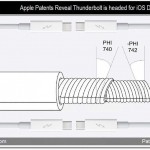
Microsoft Bing Maps got an update recently, when Chris Pendleton announced on the Bing Maps blog that a major update has been pushed in for the drivers. This update would help one get to their driving directions “routing engine.” The focus has been on improving the speed though. This update would now make the new routing engine twice as fast as it was earlier. An interesting feature in the lot is about adding up to 3 routes in one request.
Bing Maps even has a change in the routing algorithm, as it is not named “Customizable Route Planning” or “CRP”, instead of its earlier name, which was Dijkstra’s algorithm.
One would like to know, as to how does this new wouting calculation algorithm works. For the same, the blog had Chris noting an excerpt of the same, which is posted below:
Basic Algorithm. Our metric-independent preprocessing stage partitions the graph into connected cells with at most U (an input parameter) vertices each, with as few boundary arcs (arcs with endpoints in di erent cells) as possible. The metric customization stage builds a graph H containing all boundary vertices (those with at least one neighbor in another cell) and boundary arcs of G. It also contains a clique for each cell C: for every pair (v;w) of boundary vertices in C, we create an arc (v;w) whose cost is the same as the shortest path (restricted to C) between v and w (or in nite if w is not reachable from v). We do so by running Dijkstra from each boundary vertex. Note that H is an overlay [24]: the distance between any two vertices in H is the same as in G. Finally, to perform a query between s and t, we run a bidirectional version of Dijkstra’s algorithm on the graph consisting of the union of H, Cs, and Ct. (Here Cv denotes the subgraph of G induced by the vertices in the cell containing v.) As already mentioned, this is the basic strategy of separator-based methods. In particular, HiTi [19] uses edge-based separators and cliques to represent each cell. Unfortunately, HiTi has not been tested on large road networks; experiments were limited to small grids, and the original proof of concept does not appear to have been optimized using modern algorithm engineering techniques. Our rst improvement over HiTi and similar algorithms is to use PUNCH [5] to partition the graph. Recently developed to deal with road networks, it routinely nds solutions with half as many boundary edges (or fewer), compared to the general-purpose partitioners (such as METIS [20]) commonly used by previous algorithms. Better partitions reduce customization time and space, leading to faster queries. For our experiments, we used relatively long runs of PUNCH, taking about an hour. Our results would not change much if we used the basic version of PUNCH, which is only about 5% worse but runs in mere minutes. We use parallelism: queries run forward and reverse searches on two CPU cores, and customization uses all four (each cell is processed independently).


